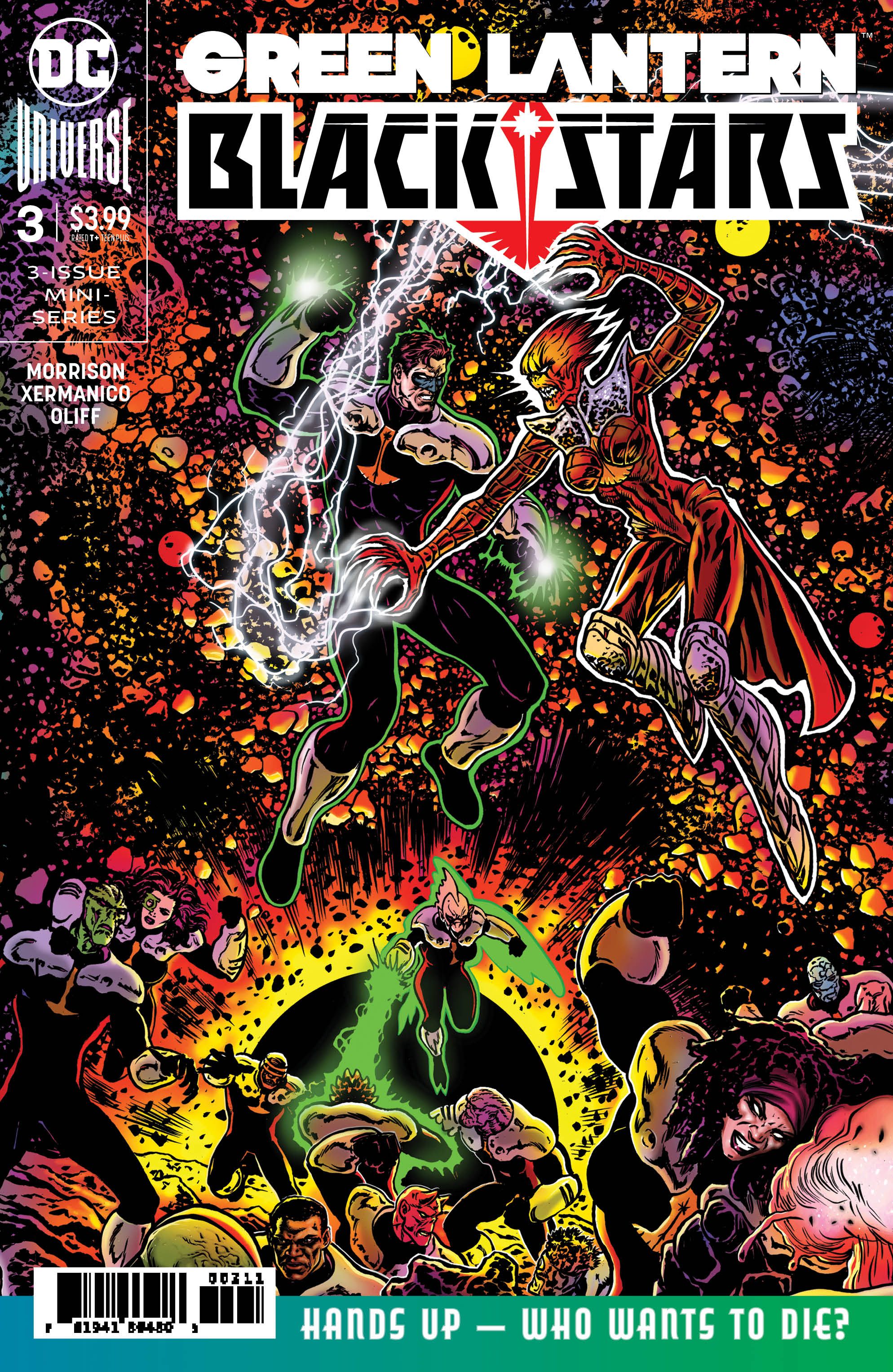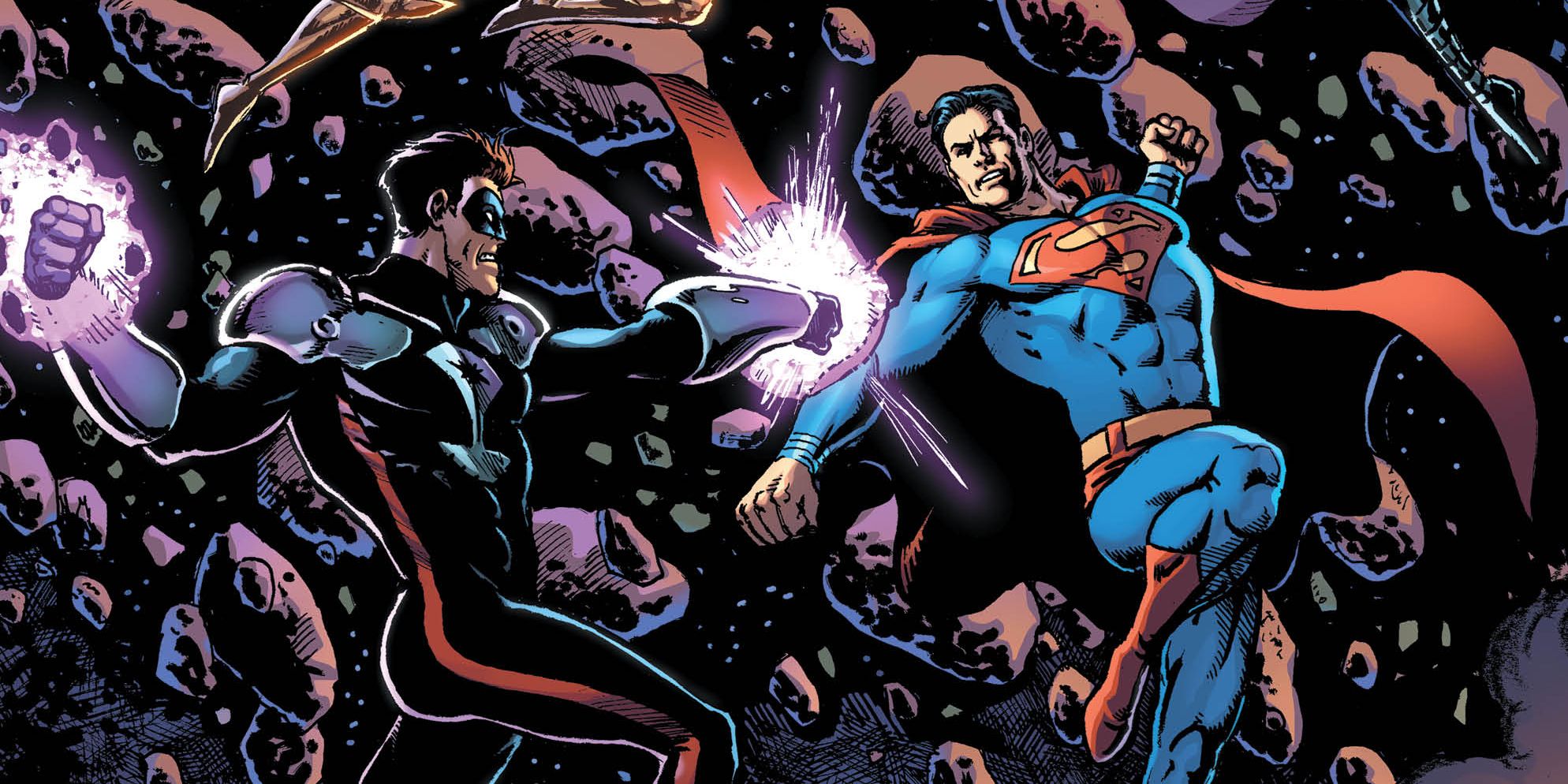Green Lantern: Blackstars #3
- WRITER
- Grant Morrison
- Artist
- Xermanico
- Letterer
- Steve Wands
- Cover Artist
- Liam Sharp, Diego Rodriguez, Darick Robertson
- Publisher
- DC Comics
- Price
- 3.99
- Release Date
- 2020-01-29
- Colorist
- Steve Oliff
As Grant Morrison and Liam Sharp's first volume of The Green Lantern drew to a close, the villainous Controller Mu used the Miracle Machine to rewrite the DC Universe so the Blackstars replaced the Green Lantern Corps as the dominant police force. This turn of events kicked off Morrison and Xermanico's subsequent miniseries Green Lantern: Blackstars, and the final issue takes full advantage of the alternate-reality setting while wrapping up the last major plot threads from Morrison and Sharp's previous run with Hal Jordan.
Picking up from the previous issue, the Blackstars are poised to subjugate Earth and all of its familiar heroes and villains as they continue to extend their conquest across the universe. After Superboy is personally recruited by Hal into the Blackstars, Superman makes good on his promise to go to war with the intergalactic regime. He leads an all-out assault on the Blackstar armada as it approaches Earth, with explosive consequences. Morrison and Xermanico reveal the secrets of this dark, alternate universe while pitting the Blackstars in their biggest, bloodiest battle yet.
The Blackstars miniseries has provided Morrison and Xermanico an opportunity to take readers through the looking glass on a magical mystery tour of this bloody alternate reality, and the creative team certainly saves the grimmest, most emotionally wrenching moments for last. From beginning to end, familiar, fan-favorite DC characters meet gruesome fates as the Blackstars' chokehold on the universe finally reaches Earth. And, as the truth behind the newly reimagined universe comes to light, the Blackstars' regime turns on its head as long-simmering internal pressures burst forth in an issue largely driven by unrestrained combat.
The premise of the miniseries and its detachment from the DCU allows Morrison and Xermanico to not hold back with their story's narrative and visual content. Iconic characters receive grievous wounds or far worse as the stakes and body count continue to escalate. Xermanico, with colorist Steve Oliff, had previously rendered some gruesome, grotesque sights in the miniseries. However, with an issue so consumed by action, goes full tilt on the visible price of war here, with an unflinching flair for gore, even and especially involving familiar characters.
However, Green Lantern: Blackstars #3 ultimately proves that the miniseries is the true coda to the larger Green Lantern story Morrison had previously started with Sharp, rather than an extended interlude in an alternate world between volumes of the main series. It is unclear how much of an impact the miniseries will have on the upcoming second volume of The Green Lantern but it certainly serves as the true finale to Hal Jordan's battle against Controller Mu and his Blackstars. And it also provides plot threads that could potentially be revisited in the future.
Green Lantern: Blackstars stands among the darkest, bloodiest tales that Grant Morrison has weaved in his time as a storyteller in the DC Universe. This alternate reality allows Morrison and Xermanico to completely subvert expectations and throw caution to the wind as they establish a grim new DCU, with Hal Jordan as one of its leading conquerors.
Without giving away the specifics, the final issue of Blackstars serves as a tonal and narrative inversion of the final issue of The Green Lantern's first volume, with both finales serving as both a conclusion and a setup for a radically different future. And with Sharp reuniting with Morrison next month to deliver new adventures of Hal Jordan back as a Green Lantern, Blackstars makes it clear that the superhero had to go through his own blackest night to reach the next emerald dawn.
Green Lantern: Blackstars is on sale now.


